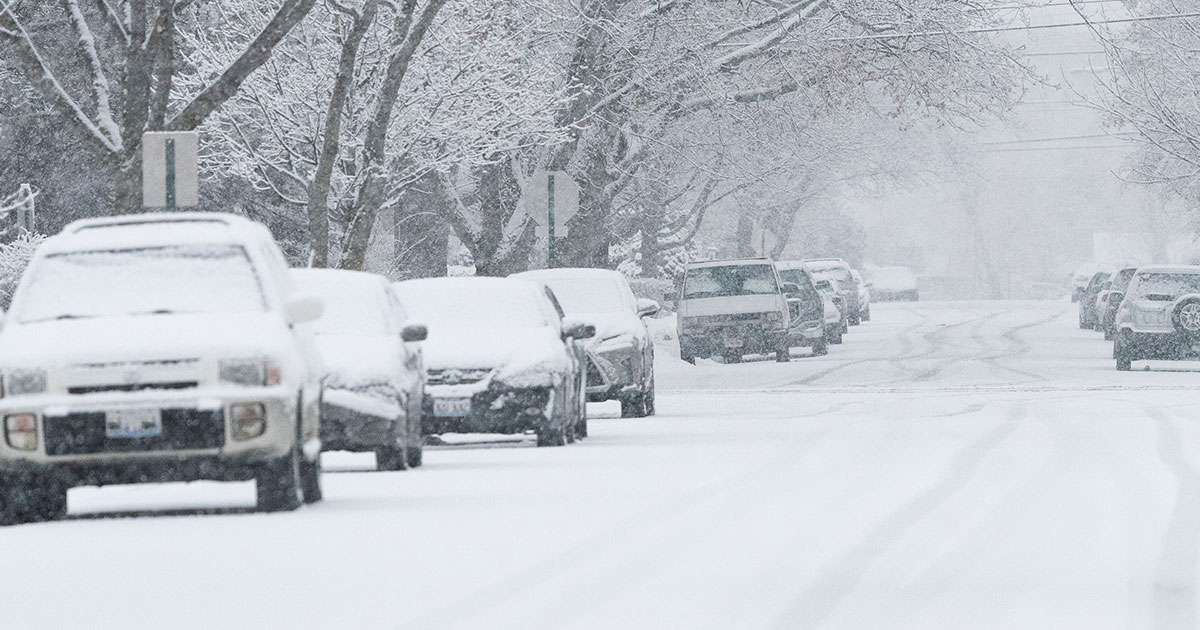The snow, ice, and colder temperatures of winter call for a little extra vigilance. To keep yourself and your loved ones safe this winter, follow these tips:
- Use Sunscreen. What—sunburn in December? Yes, believe it or not, it can happen! Snow can reflect up to 85% of the sun’s rays. If you are going to be spending time outdoors when there is snow on the ground, it’s smart to use sunscreen.
- Don’t Drive Unless You Have To. Driving in the snow can be a challenge for anyone, but especially for southerners because we don’t get much practice navigating snow-covered roads. Even if you’re an expert at foul weather driving, many of those you’ll encounter on the roadways aren’t. So if you don’t absolutely have todrive in the snow, don’t. Stay home until the roads have been plowed. If you must drive, follow these tips:
* Allow three times more space than usual between your car and the car in front of you.
* Do not attempt to pass snow plows and sand trucks. They have limited visibility.
* Keep sand, kitty litter, salt, or gravel in your trunk. If you get stuck, pour it in the path of your tire path to increase traction.
3. Shovel Snow Safely. If you are a smoker, have high blood pressure, have had a heart attack or are sedentary, shoveling snow may put you at risk for a heart attack. Ask your doctor if it is safe for you to shovel show. Everyone who shovels snow should follow these tips:
* Avoid nicotine and caffeine before you shovel snow. These can increase your heart rate.
* Drink water so you do not get dehydrated.
* Use a shovel with a smaller blade so you don’t lift too much snow at one time.
* Protect your back by bending from the knees and tightening your stomach muscles as you lift. Keep your feet hip width apart to maintain your balance.
* Take breaks and stop if you begin to feel pain.
- Four Tips for Protecting Your Pets and Other Animals:
* If you have dogs, wipe their paws, legs, and tummy after they’ve been in the snow. If you don’t do this, their paws could be irritated by salt, de-icer, or antifreeze. Worse, they could ingest these substances when they lick themselves.
* Never leave a cat or dog in the car when the weather is cold. The car can act like a refrigerator and your pet could freeze.
* Dogs get lost more often in the winter. In snow and ice, they can lose their scent and be unable to find their way back home. Protect your dog with an ID tag and a microchip.
* Move outdoor pets indoors and move livestock to sheltered areas where their drinking water will not freeze.
- Watch for Signs of Frostbite and Hypothermia.
Signs of frostbite include loss of feeling and a white or pale appearance in extremities such as fingers, toes, ear lobes, and the tip of the nose. If any of these are occur, seek medical attention right away. Signs of hypothermia include uncontrollable shivering, memory loss, disorientation, incoherence, slurred speech, drowsiness, and apparent exhaustion. If you suspect hypothermia, get the victim to a warm location, remove any wet clothing, warm the center of the body first, and give warm, non-alcoholic beverages if the victim is conscious. Call 9-1-1 and cover the person with a blanket if possible.
SIDEBAR
Winter Weather Terms You Need to Know
Freezing Rain – Rain that freezes when it hits the ground, creating a coating of ice on roads, walkways, trees and power lines.
Sleet – Rain that turns to ice pellets before reaching the ground. Sleet also causes moisture on roads to freeze and become slippery.
Winter Weather Advisory – Winter weather conditions are expected to cause significant inconveniences and may be hazardous. When caution is used, these situations should not be life threatening.
Winter Storm Watch – A winter storm is possible in your area. Tune in to NOAA Weather Radio, commercial radio, or television for more information.
Winter Storm Warning – A winter storm is occurring or will soon occur in your area.
Blizzard Warning – Sustained winds or frequent gusts to 35 miles per hour or greater and considerable amounts of falling or blowing snow (reducing visibility to less than a quarter mile) are expected to prevail for a period of three hours or longer.
Frost/Freeze Warning – Below freezing temperatures are expected.
Source: ready.gov/winter-weather





















